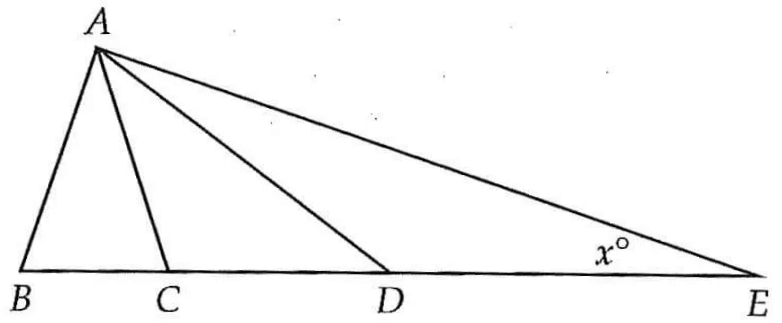ANGULAR SPEED FORMULA AND EXAMPLES
Angular Speed Formula
Let θ be the angular distance (in radians) covered in n number of revolutions in t seconds.
If ω represents the angular speed, then the formula to find the angular speed is
Note :
There are 360 degrees or 2π radians in full rotation (one complete circle around). So, the angular distance covered in full rotation (one revolution) is equal to 2π.
Example 1 :
A circular wheel makes 8 revolutions in 20 seconds. Find the angular speed of the wheel in radians per second. (Round your answer to two decimal places.)
Solution :
Let θ be the angular distance (in radians) covered in 8 revolutions.
The angular distance (in radians) covered in one revolution is equal to 2π.
Then, the angular distance covered in 8 revolutions :
θ = 8 x 2π
θ = 16π radians
Formula to find the angular speed :
ω = θ/t
Substitute θ = 16π and t = 20.
ω = 16π/20 radians/sec
ω ≈ 2.51 radians/sec
Example 2 :
A carousel makes 4 revolutions per minute. Find the angular speed of the carousel in radians per minute. (Round your answer to two decimal places.)
Solution :
Let θ be the angular distance (in radians) covered by the carousel in 4 revolutions.
The angular distance (in radians) covered in one revolution is equal to 2π.
Then, the angular distance covered in 4 revolutions :
θ = 4 x 2π
θ = 8π radians
Formula to find the angular speed :
ω = θ/t
Substitute θ = 8π and t = 1.
ω = 8π/1 radians/sec
ω = 8π radians/sec
ω ≈ 25.13 radians/sec
Example 3 :
The drive motor of a Blu-ray player is able to rotate a Blu-ray disc up to 10,000 revolutions per minute. Find the angular speed (in radians per second) of the Blu-ray disc as it rotates. (Round your answer to two decimal places.)
Solution :
Let θ be the angular distance (in radians) covered by the Blu-ray disc in 10,000 revolutions.
The angular distance (in radians) covered in one revolution is equal to 2π.
Then, the angular distance covered in 10,000 revolutions in 1 minute :
θ = 10,000 x 2π
θ = 20,000π radians
Formula to find the angular speed :
ω = θ/t
Substitute θ = 20,000π and t = 1.
ω = 20,000π/1 radians/min
ω = 20,000π radians/min
We have to convert the above speed from radians per minute to radians per second.
From the above result, it is clear that the angular distance covered in 1 minute is equal to 20,000π radians.
1 minute ----> 20,000π radians
60 seconds ----> 20,000π radians
(60 seconds)/60 ----> (20,000π/60) radians
1 second ----> (20,000π/60) radians
Therefore,
ω = (20,000π/60) radians/sec
ω ≈ 1047.20 radians/sec
Example 4 :
A computerized spin balance machine rotates a tire at 490 revolutions per minute. Find the angular speed (in radians per hour) of the tire. (Round your answer to two decimal places.)
Solution :
Let θ be the angular distance (in radians) covered by the tire in 490 revolutions.
The angular distance (in radians) covered in one revolution is equal to 2π.
Then, the angular distance covered in 490 revolutions :
θ = 490 x 2π
θ = 980π radians
Formula to find the angular speed :
ω = θ/t
Substitute θ = 980π and t = 1.
ω = 980π/1 radians/min
ω = 980π radians/min
We have to convert the above speed from radians per minute to radians per hour.
From the above result, it is clear that the angular distance covered in 1 minute is equal to 980π radians.
1 minute ----> 980π radians
60 x 1 minute ----> 60 x 980π radians
60 minutes ----> 58,800π radians
1 hour ----> 58,800π radians
Therefore,
ω = 58,800π radians/hr
ω ≈ 184,725.65 radians/hr
Kindly mail your feedback to v4formath@gmail.com
We always appreciate your feedback.
©All rights reserved. onlinemath4all.com
Recent Articles
-
Digital SAT Math Problems and Solutions (Part - 81)
Dec 03, 24 07:45 AM
Digital SAT Math Problems and Solutions (Part - 81) -
SAT Math Resources (Videos, Concepts, Worksheets and More)
Dec 03, 24 06:34 AM
SAT Math Resources (Videos, Concepts, Worksheets and More) -
Digital SAT Math Problems and Solutions (Part - 79)
Dec 02, 24 09:08 PM
Digital SAT Math Problems and Solutions (Part - 79)

